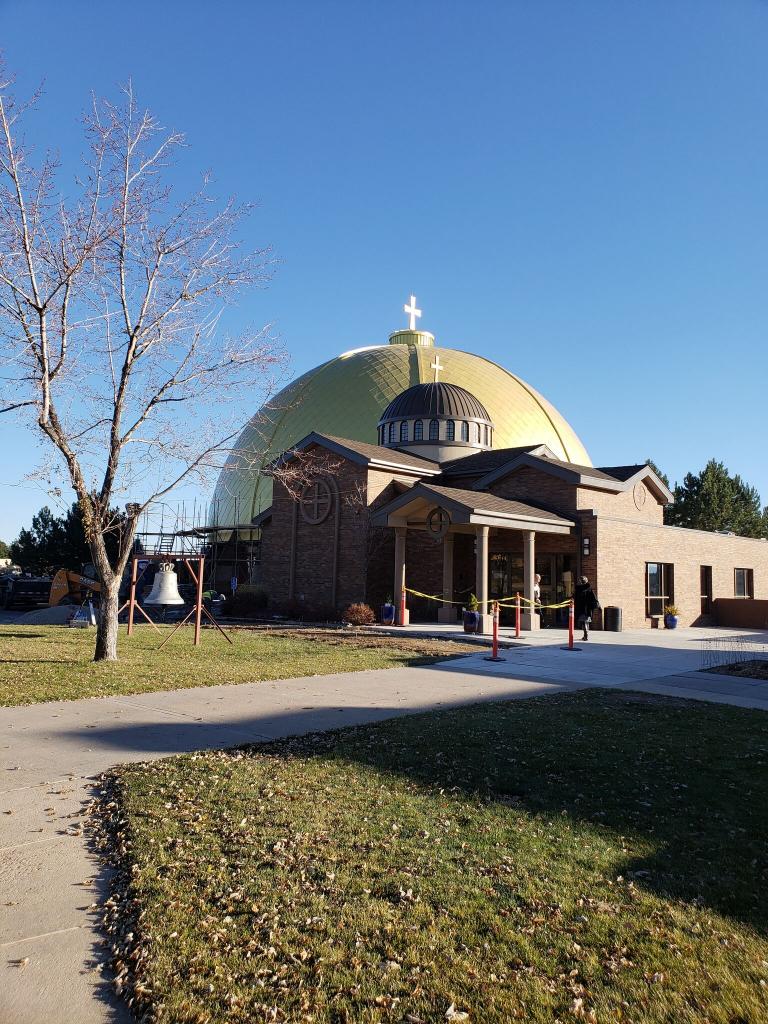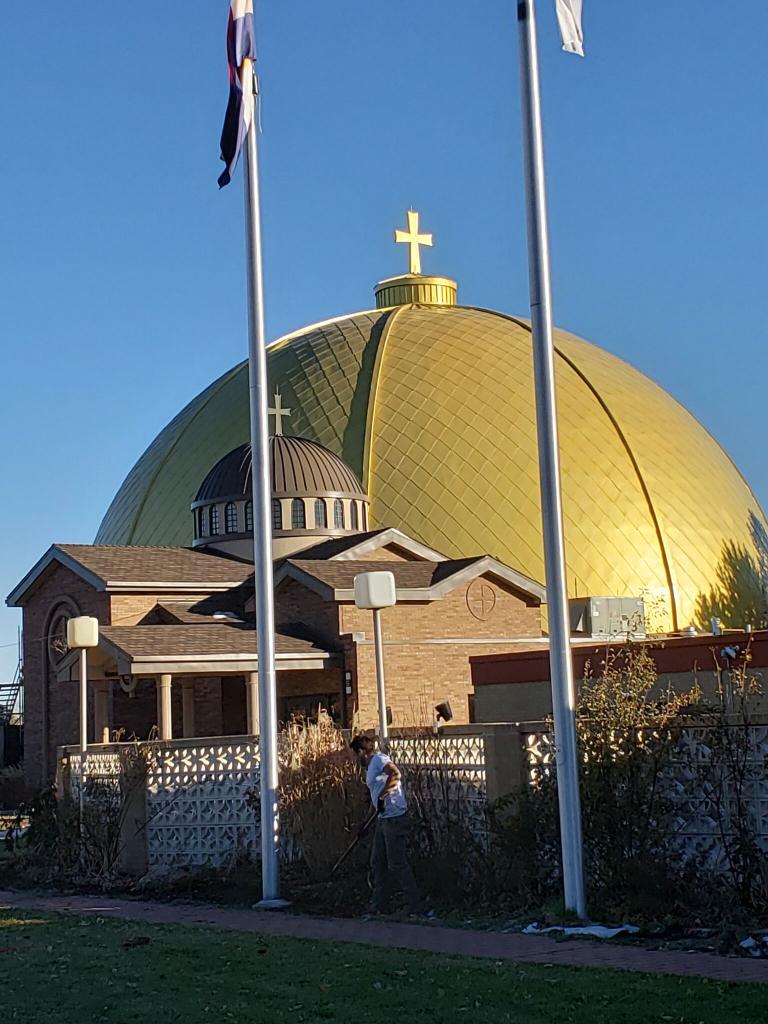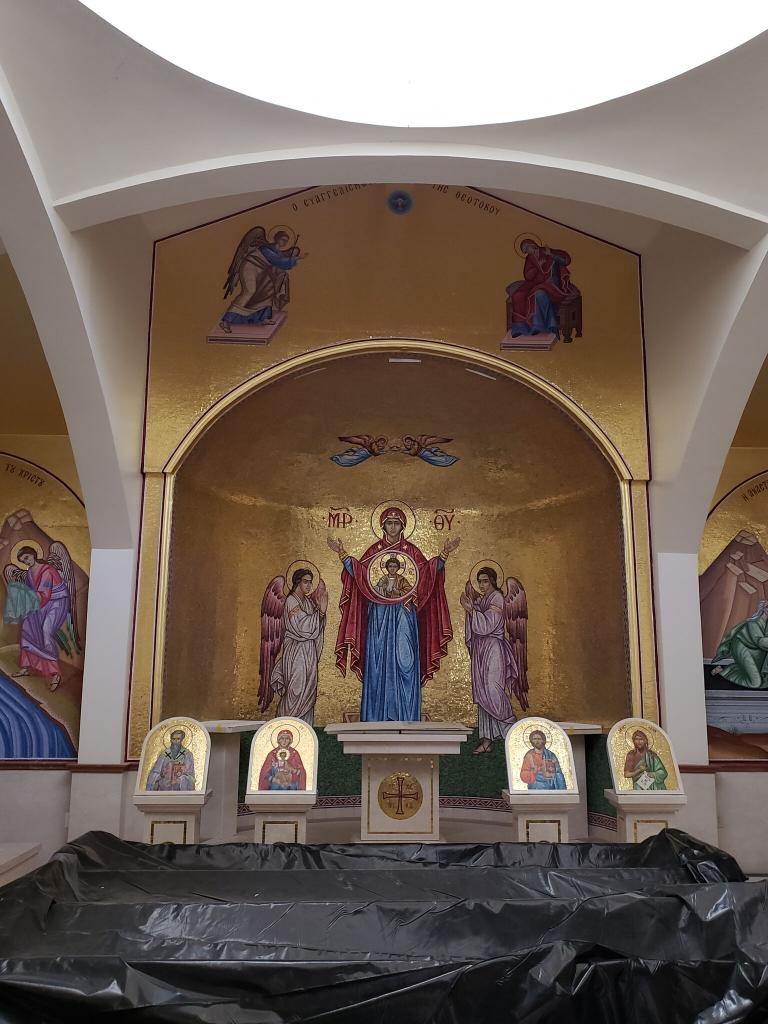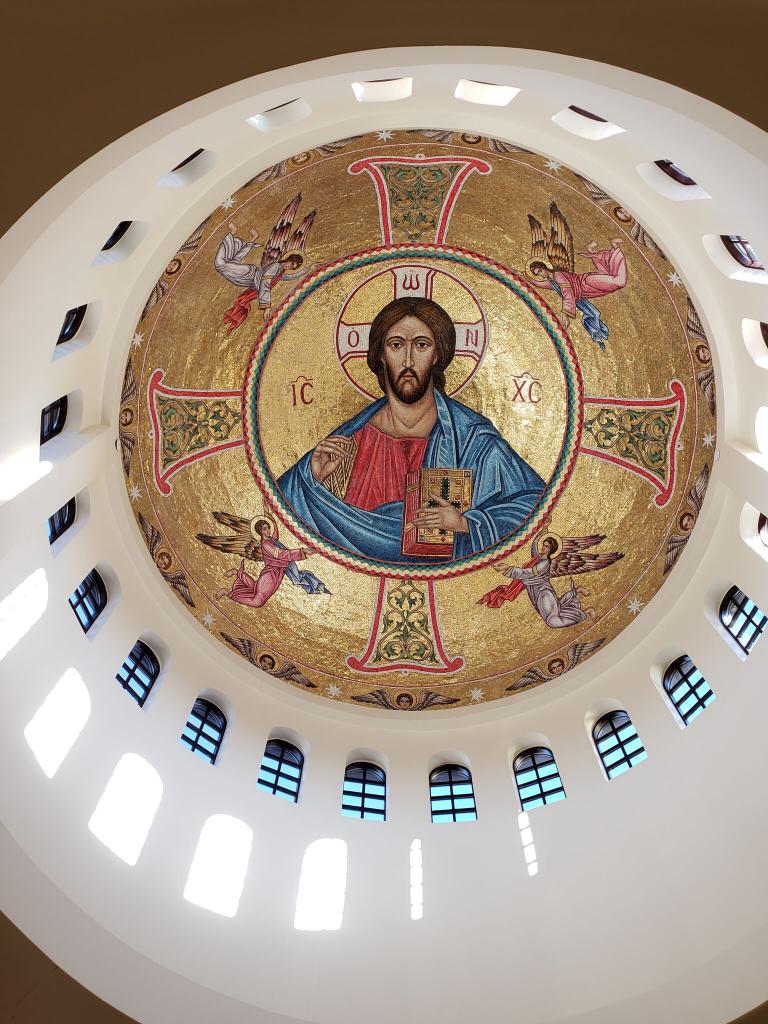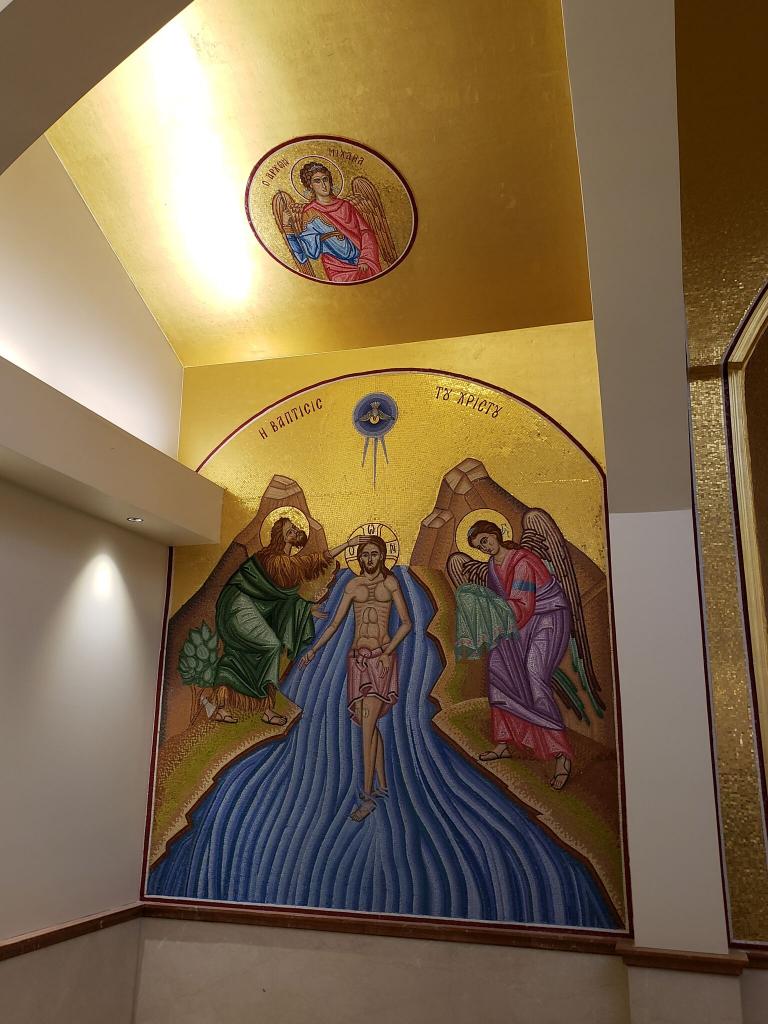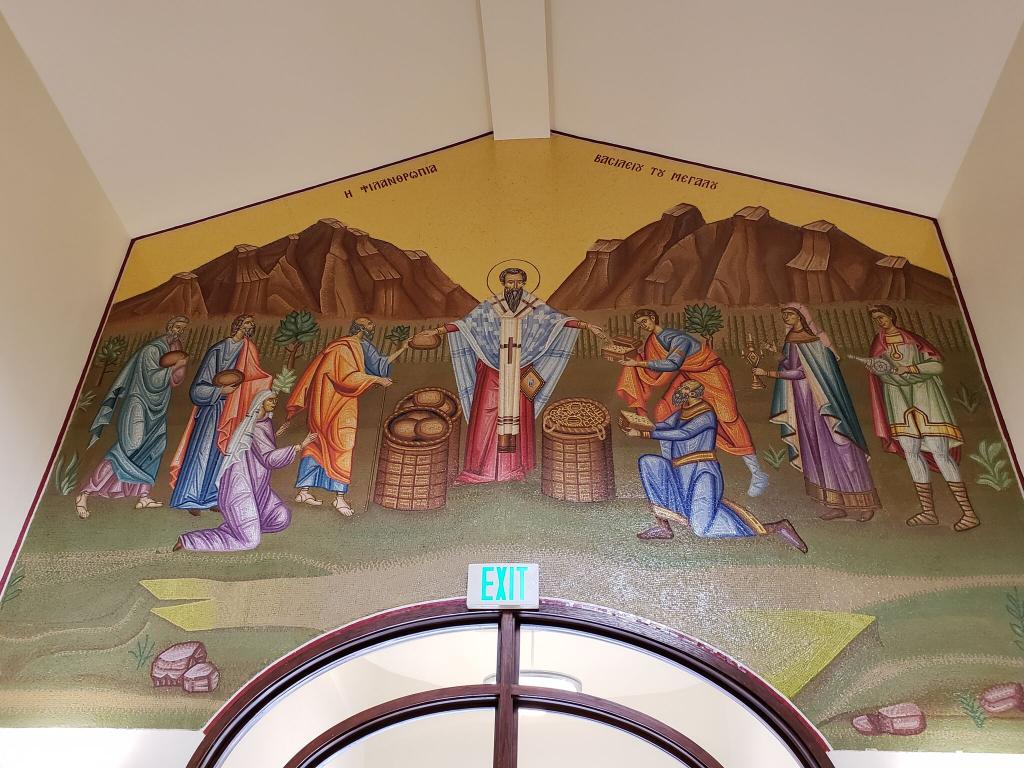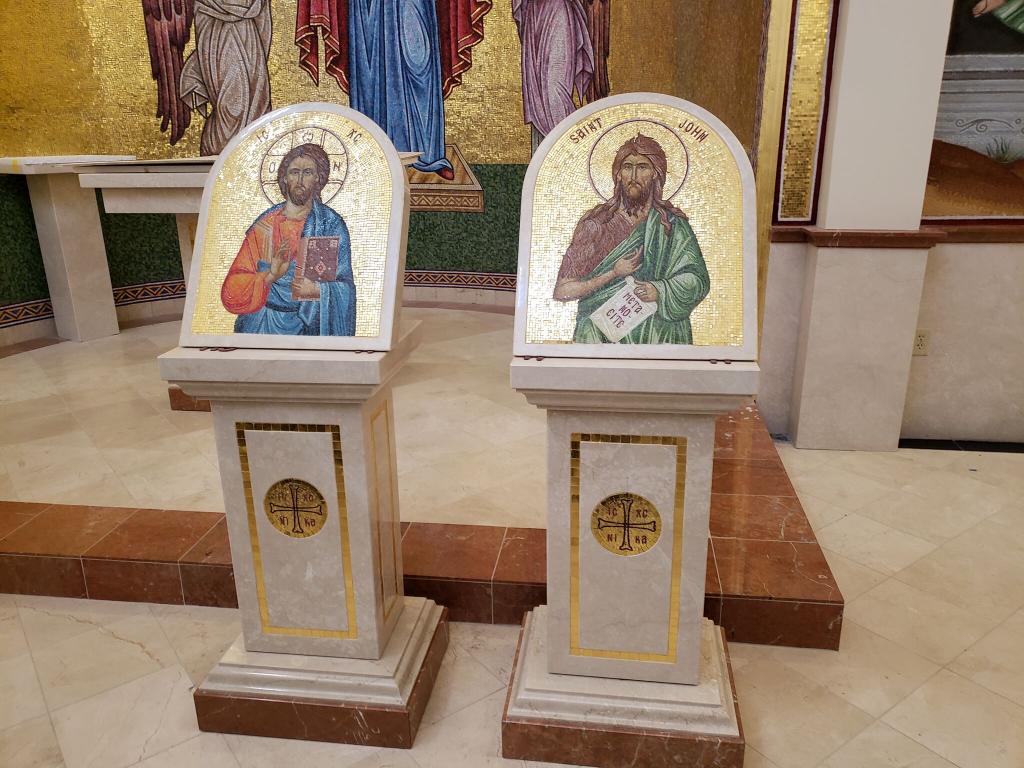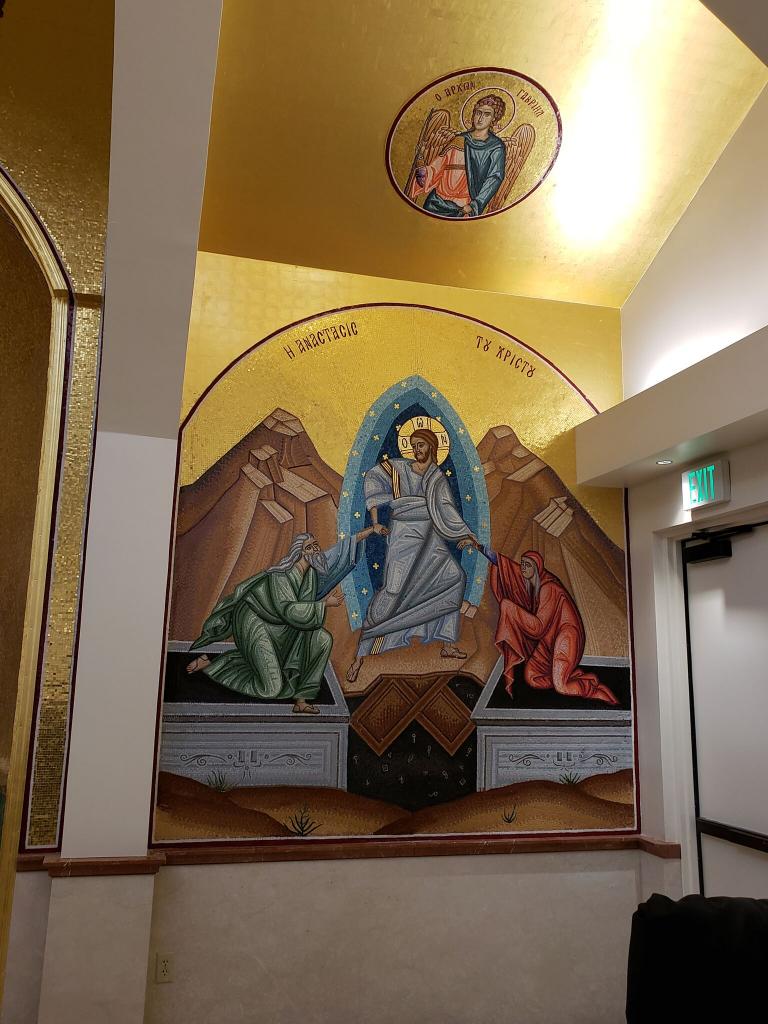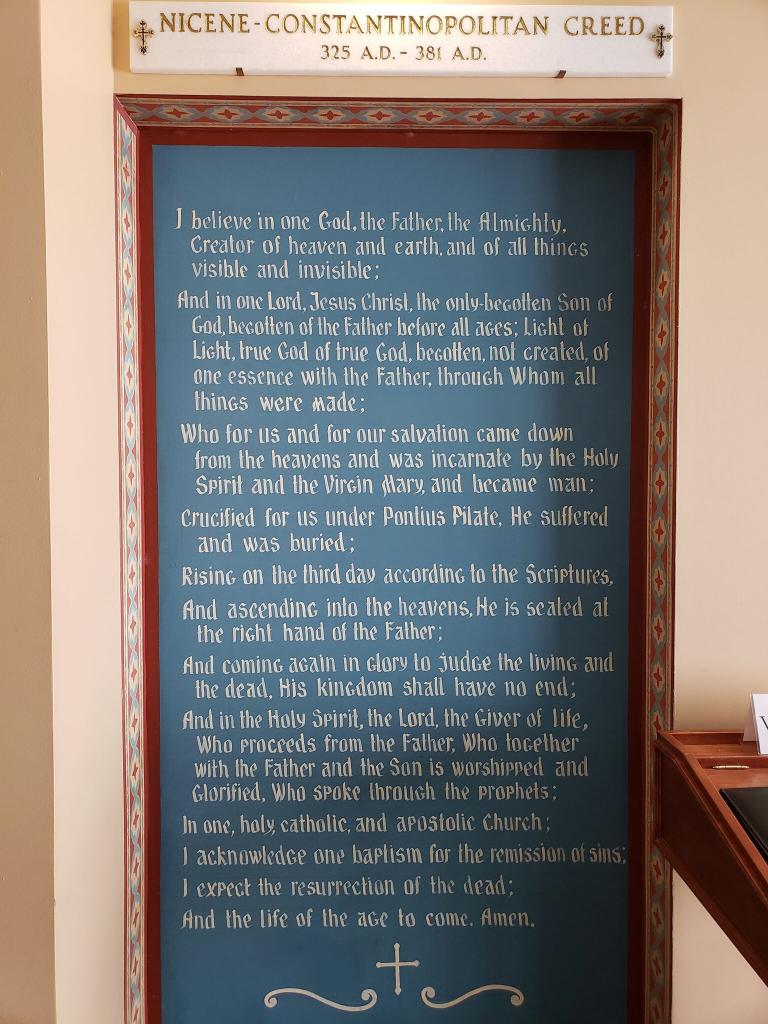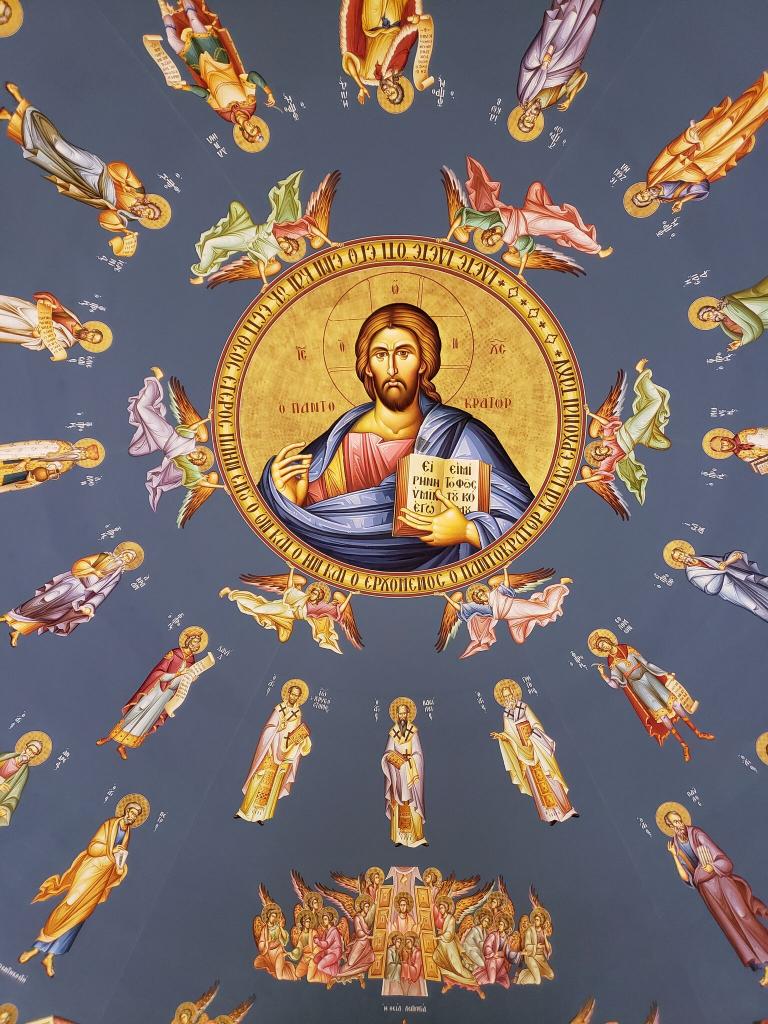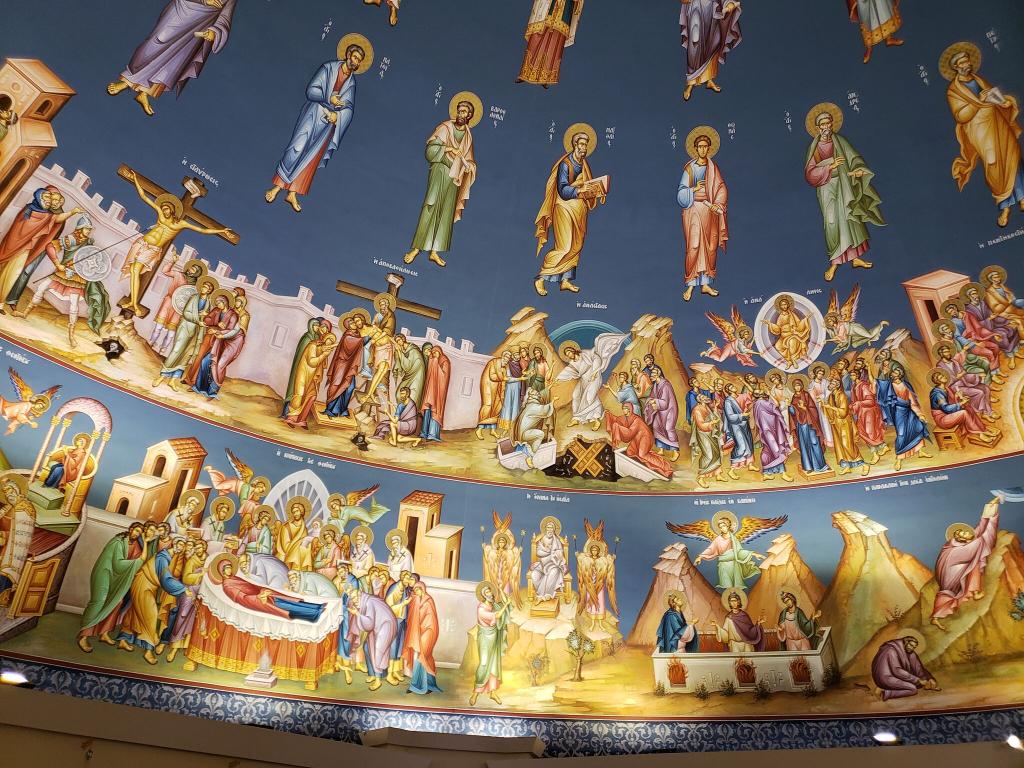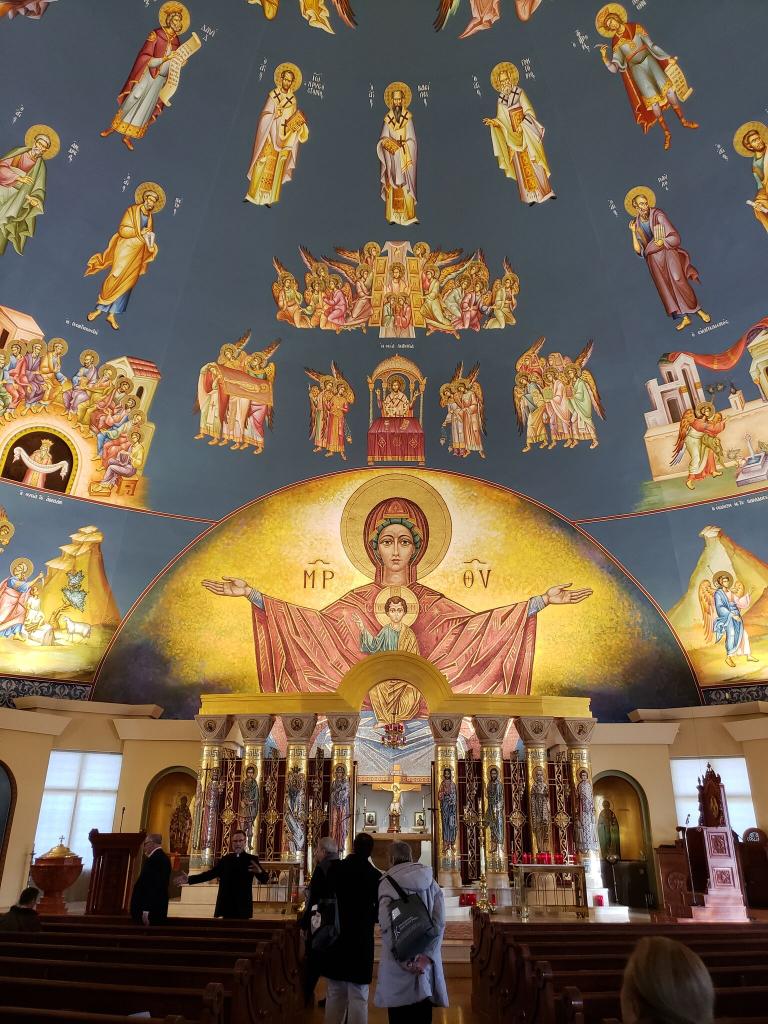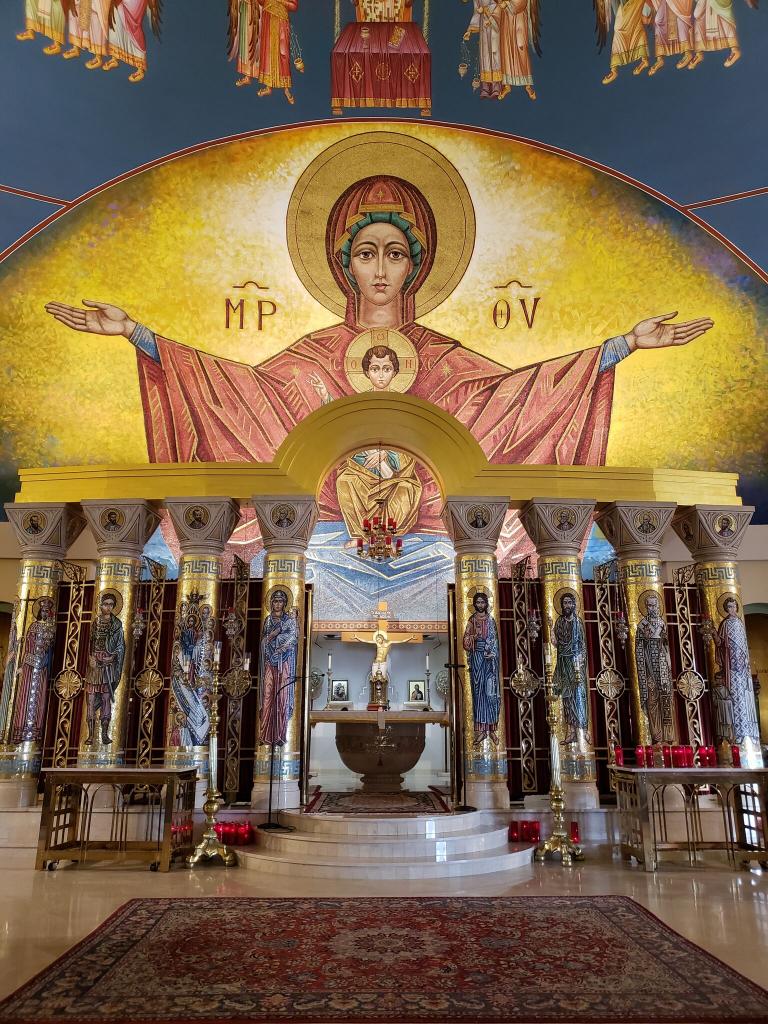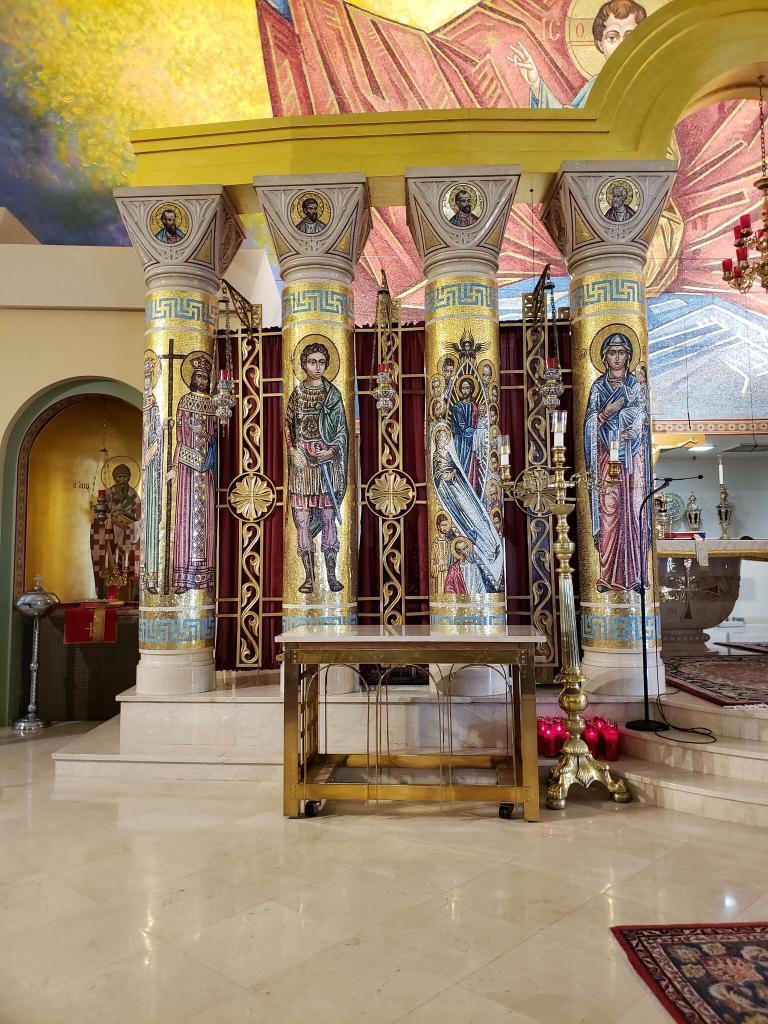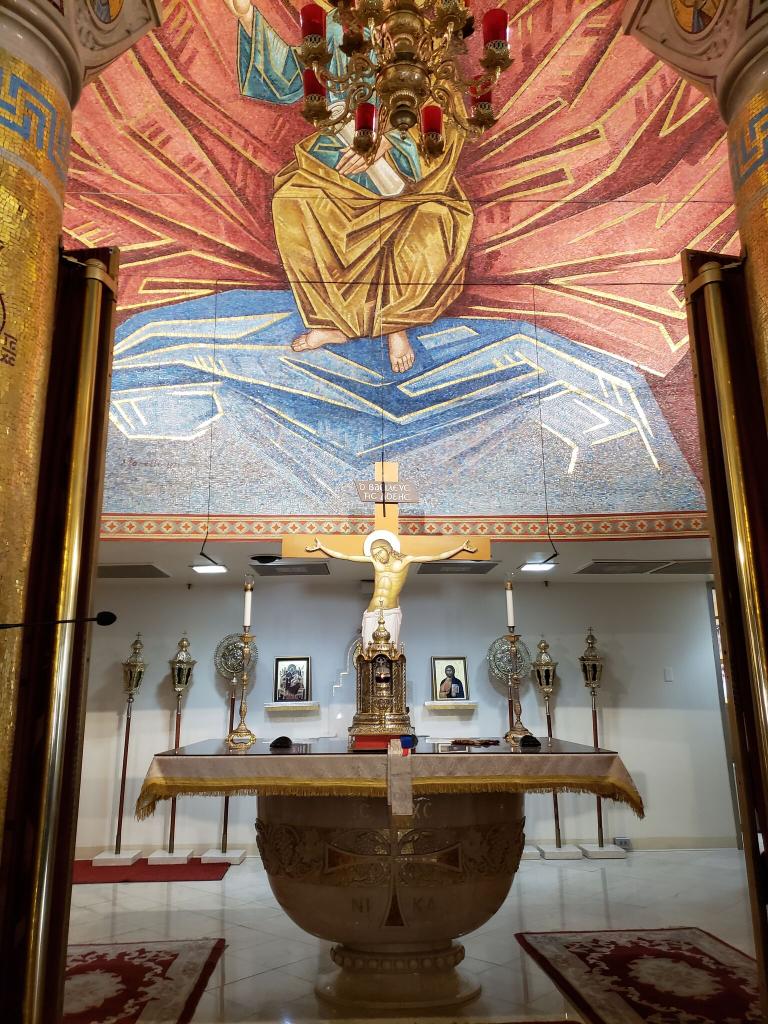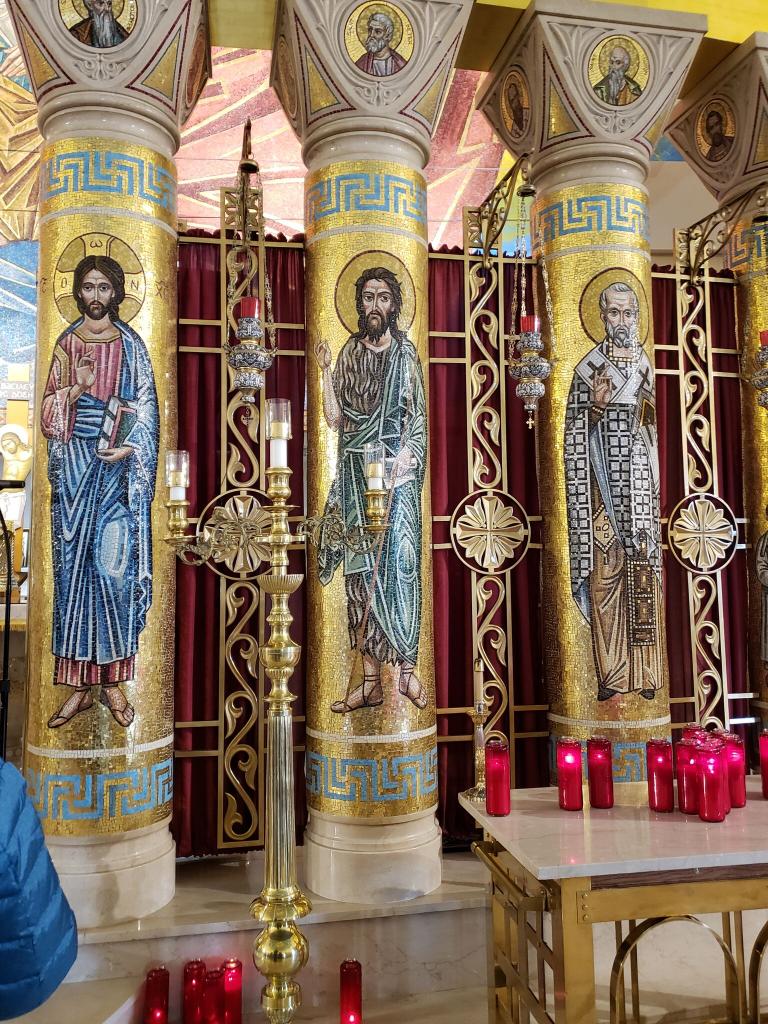My wife and I went to Denver the week before Thanksgiving to attend the annual SBL meeting. For me, it was a time of bittersweetness, as some of my best friends in the guild were being feted with a festschrift in advance of retiring and others had just retired. I must confess I hardly recognize most of the names of people giving papers at the annual meeting any more. But I was very happy to see a good number of our doctoral students present and giving papers. I also gave a lecture for the Biblical Archaeology Society on Paul’s time in Arabia= Nabatea. In this and following post I will talk about the tour we took to the Historic Churches of Denver, starting with a beautiful Greek Orthodox Church, entitled The Assumption of the Theotokos Greek Orthodox Cathedral. If you are wondering about the title, it refers to the ‘assumption’ or ascension of Mary, the God-bearer (which is what Theotokos means) into heaven, though whether in the body or of her soul can be debated (there is also an orthodox tradition her body lies in a tomb in Ephesus).
Bearing in mind that Denver is in the West, and not much west of the Mississippi really deserves to be called ancient, you will not be surprised to here that this church is quite new, and is at least the third iteration of a Greek sanctuary in Denver, the first being opened in 1908, not long after Greek Orthodox persons began to live in Denver. The building we are examining is called a “bold modernist expression of Greek Orthodoxy” with things simplified to a single domed church. A building was built on the current site on Alameda Ave. in 1972, but the building we actually visited is even more recent and still being built and can seat 800. The priest who talked to us about the church explained that the area covered by the bishop stretches from Houston to Denver, as actually there are not that many Orthodox Churches in this section of the country. The pictures that follow give you an idea first of the small chapel adjacent to the main church, and then the proper sanctuary as well.
It’s worth noting that there are two processes going on in producing the images you see. In some cases it involves mosaics, in some cases it involves paint on canvas of some sort. The central dome of the cathedral itself is mosaic, but all the surrounding saint and angel images are paint on canvas.
This particular cathedral uses the divine liturgy of John Chrysostom, and when one looks at the book in the pew one finds Greek, Greek transliterated, and English throughout the liturgy. Greek services can go on as long as three hours, so mercifully this congregation has pews to sit in, but older Orthodox churches often don’t.


